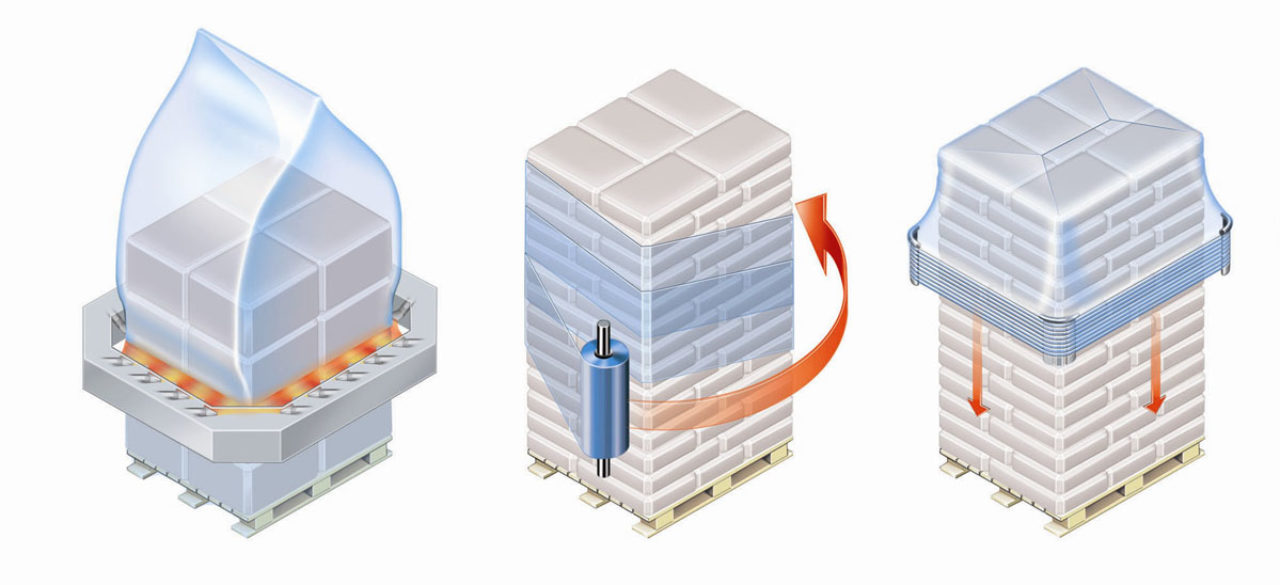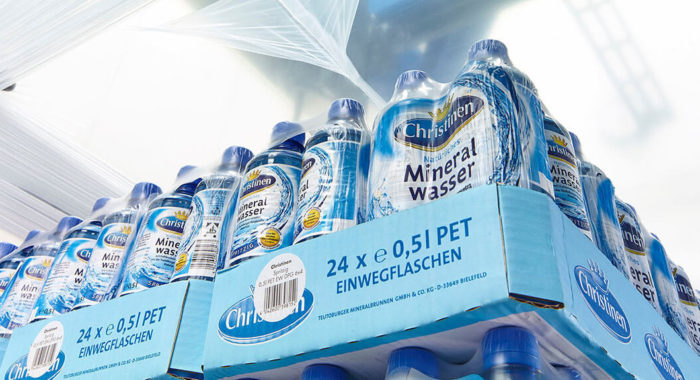The pallet wrapper is the most common technique
The stretch wrapping method is a widely used packaging technique. Due to the comparatively low purchase price, many companies have opted for pallet wrappers. There are two types of stretch wrappers. In one technique, the pallet with the goods (e.g. cartons) sits firmly on the floor and a rotating arm moves around the packaged goods with the stretch wrap.
Other wrapping machines use a rotating turntable to rotate the pallet and the items on it. Here, the roll of film is in a fixed position. With both machines, the stretchable film is wrapped around the packaged goods on the pallet and encloses them tightly. However, the products are only fixed in the horizontal axis by the wrapping machines. The lack of a vertical fixation is a very important factor, especially during transportation. Therefore, the pallet wrapper is more suitable for comparatively light goods and not suitable for heavy and sharp-edged goods such as bricks. Furthermore, the semi-automatic film wrapper requires a considerable amount of stretch film. A frequent changing of the film roll is one of the reasons why this technology is only suitable for small quantities of goods.
Another disadvantage is the lack of film on the top of the pallet. Additional measures are therefore required to protect the goods from the elements. Due to the many layers of wrapping required, the scanning of barcodes is a problem and the display effect is also far from optimal plus the surface cannot be printed on. Due to the adhesive effect of the stretch film dust particles and dirt are also attracted to it, especially during prolonged storage. Due to the unwrapped upper end, unauthorised persons can quite easily remove goods without damaging the packing material. It is quite common for the film end to detach itself from the pallet and stick out slightly, thus interfering with the sensory system of the conveying technology in warehouses. Accidents have already occurred when handling the pallets due to the protruding stretch film getting caught on shelving systems.

 Our Commitment to Sustainable DevelopmentAs an independent and family-owned company, BEUMER Group is deeply committed to the principles of sustainable development. Through strong partnerships we have developed a deep understanding of the sustainability issues of our key industries and enable our partners to achieve their sustainability goals and targets.Learn more
Our Commitment to Sustainable DevelopmentAs an independent and family-owned company, BEUMER Group is deeply committed to the principles of sustainable development. Through strong partnerships we have developed a deep understanding of the sustainability issues of our key industries and enable our partners to achieve their sustainability goals and targets.Learn more




